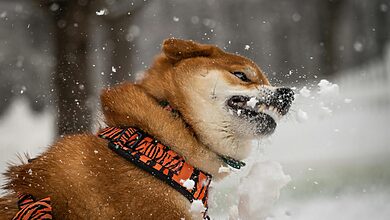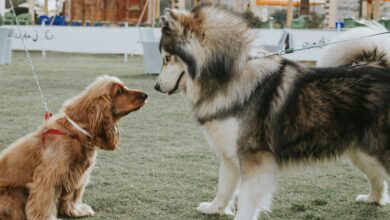Positive Reinforcement: Effective Training Techniques For Dogs
Positive reinforcement is a powerful and humane training method that can create a harmonious relationship between you and your furry friend. In this comprehensive guide, we’ll delve deeply into the world of positive reinforcement effective training techniques for dogs, exploring how it works, why it’s effective, and how to implement it successfully in training your dog.
Table of contents
Understanding Positive Reinforcement
Positive reinforcement is a training technique rooted in the principle of rewarding desired behaviors. Instead of resorting to punishment or intimidation, positive reinforcement encourages dogs to willingly perform behaviors by associating them with rewards. These rewards can encompass treats, verbal praise, pets, playtime, and other forms of positive experiences your dog enjoys.
Why Positive Reinforcement Works
Promotes Learning
Dogs are naturally inclined to seek rewards, making them eager and motivated to learn when trained using positive reinforcement.
Strengthens the Bond
Positive reinforcement creates a strong emotional connection between you and your dog, fostering trust and cooperation.
Reduces Stress
Unlike punitive methods, positive reinforcement reduces stress and anxiety in dogs, creating a positive and enjoyable learning environment.
Encourages Engagement
Dogs become active participants in their training, as they strive to understand which behaviors lead to rewards.
Versatility
Positive reinforcement is adaptable and suitable for dogs of all ages, from rambunctious puppies to dignified senior dogs.
Effective Training Techniques For Dogs
Clicker Training
Clicker training is a well-known and precise positive reinforcement technique. It involves using a small device called a clicker that makes a distinct sound when pressed. The clicker serves as an instant and consistent marker to signal to your dog that they’ve executed the correct behavior. Clicker training relies on impeccable timing to be effective.
Luring
Luring is a hands-on technique where you use a treat to guide your dog into a specific position or behavior. For example, you can use a treat to lead your dog into a sitting position. Over time, you gradually phase out the treat, as your dog becomes proficient in the behavior.
Shaping
Shaping is a method that rewards successive approximations of a desired behavior. You start by rewarding small steps toward the final behavior. For instance, if you’re teaching your dog to fetch a toy, you might initially reward them for looking at the toy, then for touching it, and finally for picking it up.
Capturing
Capturing is a technique where you reward your dog for spontaneously performing a desired behavior. For example, if your dog sits down without a command, you promptly reward them. This technique is excellent for reinforcing behaviors that naturally occur.
Treating, Praising, Petting, Playing
These are fundamental forms of positive reinforcement. Whenever your dog obeys a command or demonstrates good behavior, you can reward them with treats, verbal praise, pets, or playtime. Consistency in your rewards ensures that your dog associates the behavior with positive outcomes.
Training Techniques For Dogs
Positive reinforcement should be tailored to suit your dog’s individual needs, age, and temperament. Whether you’re training a spirited puppy, an adult dog, or a wise senior, your training approach may need adjustments. Moreover, if you have a reactive dog or one with functional needs, positive reinforcement can be particularly effective in addressing their unique challenges.
Common Training Goals
Basic Obedience
Positive reinforcement is exceptionally effective in teaching fundamental commands like sit, stay, come, and down. It helps instill good behavior and creates a well-mannered companion.
Socialization
Positive reinforcement plays a vital role in socializing puppies and easing dogs of all ages into interactions with people and other animals. It helps build confidence and reduces fear.
Addressing Behavioral Issues
Positive reinforcement can effectively address common behavioral problems such as excessive barking, jumping, or chewing by redirecting your dog’s energy into constructive actions.
Advanced Training
For those interested in advanced obedience training, agility, or teaching tricks, positive reinforcement can be used to teach complex behaviors and sequences.
Building Confidence
Positive reinforcement bolsters your dog’s self-confidence, aiding them in overcoming fears or shyness. It helps them feel secure and capable.
Mistakes to Avoid
While positive reinforcement is a powerful training method, it’s essential to be aware of common pitfalls:
Inconsistent Rewards
Ensure you consistently reward desired behaviors to avoid confusing your dog.
Ignoring Undesirable Behaviors
Rather than punishing unwanted actions, redirect your dog toward appropriate behaviors and reinforce those.
Timing Errors
Rewards should be immediate and directly linked to the desired behavior for effective training.
Skipping Training Sessions
Consistency is key; regular training sessions yield better results than sporadic ones.
Setting Unrealistic Expectations
Be patient and realistic about your dog’s progress. Every dog learns at their own pace.
By mastering positive reinforcement techniques, you’ll not only achieve your training goals but also foster a deep and trusting relationship with your canine companion. Always remember that training should be a positive and enjoyable experience for both you and your dog.








